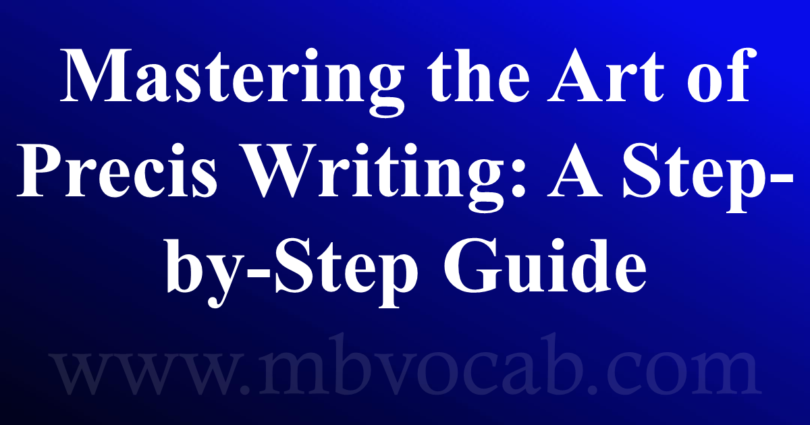Optimal Strategies for Crafting Succinct Summaries
The term “PRECIS” finds its origins in the French language, signifying “to be precise” or “to condense.” In simpler terms, it denotes a summary, the essence, or the core of a given passage. It resembles the act of pruning surplus verbiage from a text, akin to a seasoned and vigilant horticulturist who trims away superfluous elements and foliage from plants to bestow upon them an aesthetically pleasing appearance. Therefore, a précis stands as a concise composition, characterized by a continuous narrative and unequivocal meaning.
An exemplary précis should exhibit the following attributes:
An impeccable précis must be succinct and terse, presenting solely the primary facets of the text in the fewest words possible, excluding all irrelevant particulars, extraneous verbiage, and circumlocutory expressions.
An impeccable précis should offer lucidity and unambiguity. It should shun obscurity and vagueness, endeavoring to reproduce ideas with nearly the same degree of clarity as found in the original text, ideally within one-third of its original length.
An impeccable précis should form a cohesive whole, akin to a seamless, comprehensive entity.
An impeccable précis should present a well-connected and coherent narrative. It should read like a unified composition, maintaining absolute coherence and unity.
Vigilance must be exercised to ensure that the crafted précis is comprehensive, encapsulating all pertinent points and ideas without omitting any crucial concepts present in the source text.
Guidelines for Composing a Précis
(1) The student ought to peruse the passage once or twice, striving to comprehend its overarching purpose and deriving the title for the précis.
(2) Upon re-reading the passage, identifying and marking essential points that relate to the title is crucial.
(3) Unnecessary embellishments such as illustrations, quotations, details, examples, and adjectives should be omitted. Adjectives with specialized or technical connotations may be retained.
(4) Systematically arrange all significant points in a logical order, commencing with a clear statement that delineates what follows next.
(5) Endeavor to apply one-word substitutions where feasible.
(6) The précis should invariably be articulated in the author’s unique phrasing and should not consist of fragments culled directly from the source text.
(7) A précis should be presented in indirect narration.
(8) Generally, past tense is employed in writing a précis; however, if the passage conveys universal truths, this convention may be disregarded.
(9) Unless an absolute necessity arises, conjunctions may be replaced with semicolons.
(10) Conversations or dialogues necessitate presentation in narrative form.
(11) The précis title is separate from the main text and should not be included in the word count. It should not be referenced within the narrative.
(12) The length of a précis should not surpass one-third of the original passage’s total length.
(13) Craft a title or heading for your précis. Even if not explicitly requested, a title should always be provided.
(14) Always cross-reference your draft précis with the source text to ensure accurate preservation of the original meaning.
(15) The language and style of the summary should remain unadorned and straightforward. Figurative language from the source text should be transformed into plain, unambiguous English in the summary. The inclination towards employing intricate, opaque, or polysyllabic vocabulary should be avoided.







